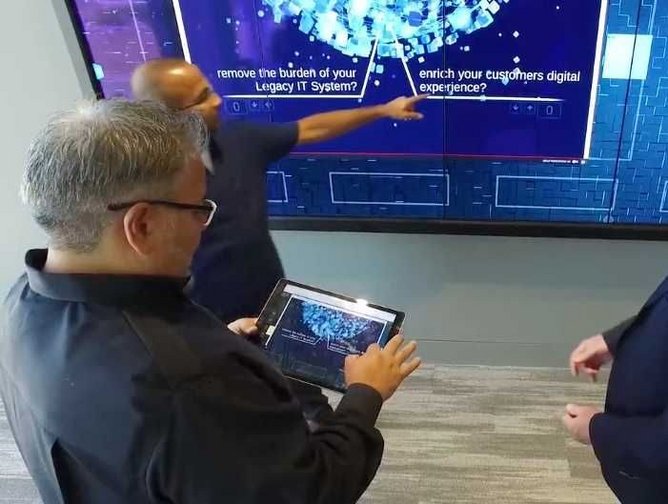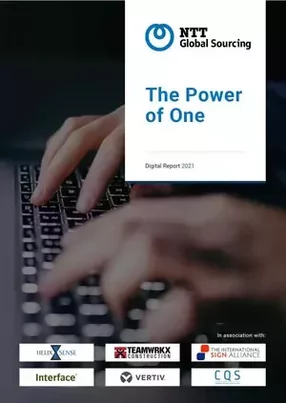It is 4 am in Houston, Texas, when Arvind Kumar checks his emails and preps for the day ahead. The Global Vice President of Indirects at NTT Global Sourcing has an important call with a team in India, 11 hours ahead, and will be working right through to the early evening. It is a demanding role, but one that Kumar relishes. He is an executive energised by the prospect of big picture programmes and an emphatic champion of bringing businesses together to achieve through collaboration that which would be impossible alone.
Kumar’s values very much align with the shared philosophy of the NTT Global Sourcing team, a 60-strong global outfit that was assembled two and a half years ago by CEO Mark LeNeve to advance the role of sourcing within NTT and centralise the group’s buying power. Commanding upwards of $30bn in annual spend, it is a powerhouse of procurement.
From the outset, the startup identified three core areas that would need to be modernised and reformed to excel in the modern landscape, and to realise the vision of the group’s top executives. NTT GS’s primary directive is to leverage the group’s combined influence and unify the hundreds of companies and entities that operate under its banner. “Our whole focus has been to bring the strength of NTT as a group into one programme. Our job is to make sure we bring projects into a central focus area that can help us drive the big picture value and give back to the various operating companies across the group.”
First, NTT GS established a common platform through which these decentralized entities could bring their initiatives together. Better planning and strategic sourcing allows for the consolidation of spend across the business and its categories. The team also identified roughly 200 best-in-class vendors with which to build long-term partnerships.
Kumar’s role with this newly minted procurement division is indirects, a broad remit that encompasses payment solutions, everything to do with real estate - from land acquisition and construction through to lease back and infrastructure built for data centres - and managing all the facility workplace services around the globe. It is also involved in the digital transformation programmes within the group, though “there's a slight difference in our approach,” Kumar explains.
The implementation of new digital platforms such as SAP Ariba are group-level decisions that roll down to the company level. In this regard - in the traditional definition of digital transformation - Kumar’s division has little involvement. “But what we do in contributing to the digitalisation efforts is to look at the pre-existing programmes and processes across the group and within the categories that we manage. We also ensure there is automation, enforce digitalisation, and transform the category and processes from legacy to next-generation.”
Ecosystem of value
This process of upscaling and reshaping legacy systems is also evident in Kumar’s approach to indirect sourcing. Traditionally, procurement is a one-way process of assessing and negotiating terms with a vendor to supply a product or service. Kumar’s model has upended this linear structure, instead creating an ecosystem of partners with an economy of shared capabilities, ideas and revenue generation opportunities.
“I’m very passionate about this,” Kumar says. “I truly believe there's a larger picture that a lot of procurement organisations don't realise. The supplier partner ecosystem we are building on a strategic level provides vast opportunity to create and add incentives to businesses within our group, and for partners to work together to generate new income and business. I am a big proponent of building a supplier ecosystem, depending on certain projects, initiatives or categories, and promote collaboration with NTT in the middle of it as an incubation hub.”
Kumar envisions NTT Global Sourcing as the “choirmaster” of this global network, standing with an overview of the entire ecosystem, driving strategy and aligning these partners to work together - the upshots of which are beneficial to the entire value chain. “Not only does it help us generate better value with the partners, but also for our partners to work together in collaborative programmes,” Kumar says. “As a result, NTT has created a meeting platform, which allows everybody to work together seamlessly.”
He explains that today, partners that never knew each other before aligning with NTT are now working closely in conjunction to create new business and revenue opportunities. At the same time, these collaborative projects strengthen NTT’s supply chain and develop go-to-market solutions that benefit the group’s existing and new clients.
Building the future
This complex network of partners will soon be enshrined in a major capital project that has been in the works for some years and, in many ways, sits at the heart of NTT’s future. In Sunnyvale, California, the group is readying the unveiling of One NTT Vision Campus, a smart, sustainable building that is a physical manifestation of its capabilities and future goals. Upon its mention, Kumar is instantly energised.
“That is a very special project, very dear to my heart and the work I do every day because I've always wanted to be part of a sustainable, smart building programme. This is the vision of our CEO, bringing NTT companies together in one common real estate platform, one common office, but also make it a smart and intelligent workplace which focuses on employee experience, sustainability, wellness - all the key measures that today are important. At the same time, it has state of the art technology in terms of sensors, automation, IoT, and so on. And on top of that, it is a sustainable building, which means we have a solar captive fuel cell hybrid system with backup power being managed to back up the building and save utility energy costs.
“This is a living, breathing showcase of our ecosystem partners and what they deliver together with us, how we use it internally, and how we give back to employees. And also it becomes a showcase to show clients what we can do for them with these kinds of platforms and technologies as a solution provider.”
For Kumar, the central role NTT Global Sourcing played in the Sunnyvale project illustrates how his division deviates from the traditional procurement function.
“Sunnyvale is a classic example of how we brought that spirit to life and really demonstrated that we go above and beyond standard procurement negotiation and other sourcing activities. We were also there advising, guiding, developing the strategy, supporting the business, integrating the partners, bringing the ecosystem, creating this whole smart building concept of the One NTT Vision.”
The outbreak of COVID-19 threatened to derail this construction project, and Kumar vividly recalls the onset of the virus. Returning from Sunnyvale to Texas on a flight last February, he awoke the next day to find companies shutting down, airports beginning to empty out, and individuals and businesses standing still, not quite sure how to react.
“Now imagine, I'm running a construction project in Sunnyvale, I'm sitting in Texas, and we are in the heart of COVID. But we still have a timeline to meet, and we are pressured, and there's a cost impact associated with shutting down, then reopening, and other delays.”
Here, indirect sourcing came into its own. “We played a big role, as you can imagine. In terms of procurement, we needed safety gear, PPE, masks, hand sanitiser - all of these things that were in short supply. On the other hand, we also had to help our clients procure these things, so we used our supply chain to support them through that process.”
In the end, construction never stopped on the One NTT Vision campus. “We are close to completing the building and looking ahead to the big launch,” Kumar says. “We never stopped. We actually pulled through the times and really made it happen against all odds. We kept people-focused, kept people safe and positive, and ensured that the business could continue.”
With the global vaccine effort now well underway, Kumar believes we should remember the lessons learned during this turbulent period. “The key for sourcing organisations in the future must be a solution-driven approach, focused on the value the supply ecosystem brings to the company when you build strategic partnerships. I think we need to look at a larger focus on that because in the next world that we're living in post-COVID, the supply chain partners and suppliers can add a lot of value in terms of not only managing the cost structure but being resilient to these activities.”




